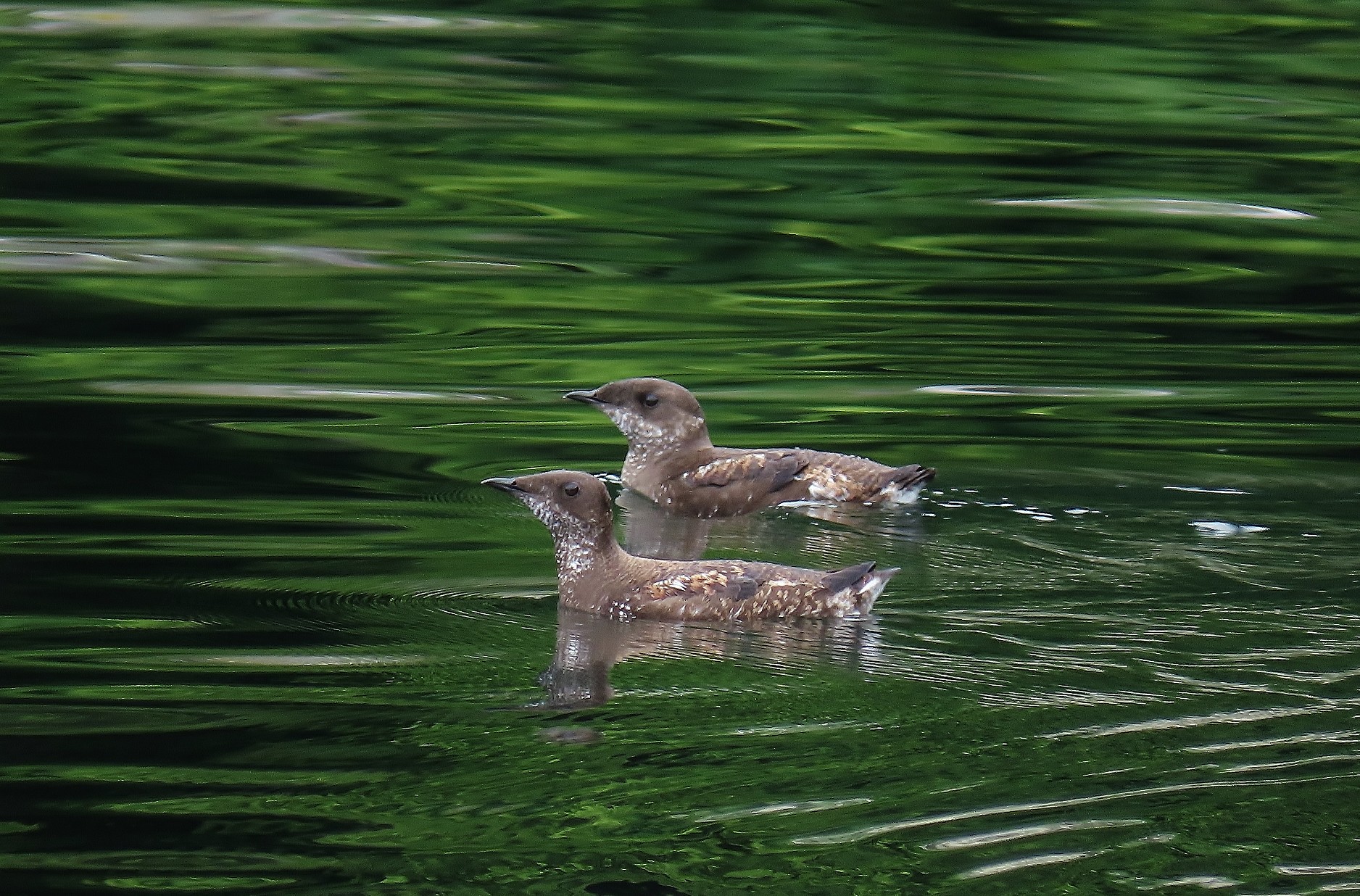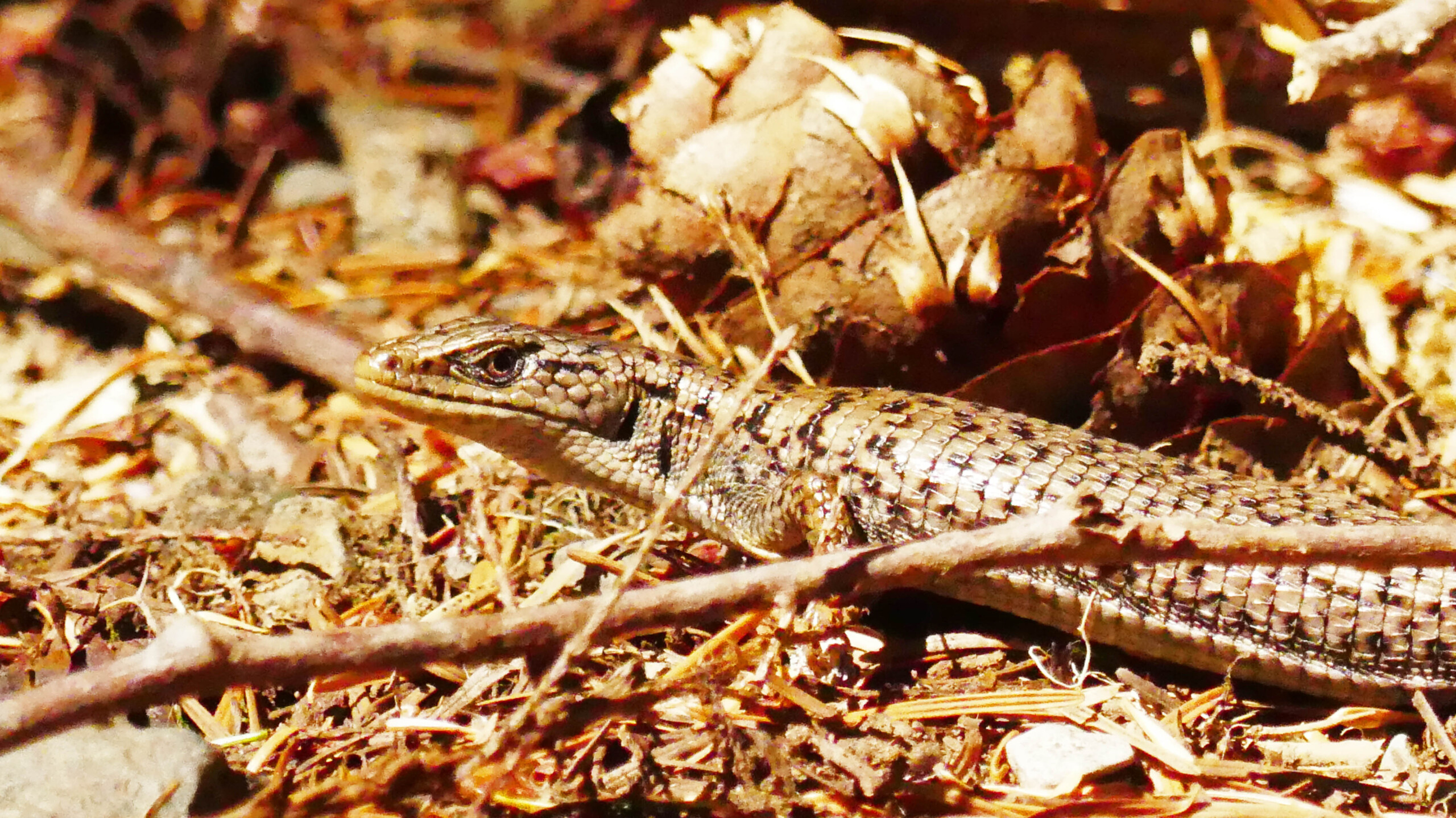by danneuman
Share
by danneuman
Share

*Photo Credit to Guy Monty*
In the birding community, that means Marbled Murrelet. We use the first two letters of each word in the name…, It’s a long story.
Anyway, this bit is about Marbled Murrelets. If you’re not into birds, you can skip this story now. You may have heard of them if you have been on the West Coast for a few years. They’ve been in the news. They are among the few animals that require Old Forest to survive. It’s mandatory, obligatory.
Why, you might ask? Therein lies quite a story. You see Murrelets, are a kind of seabird related to puffins and auks. They spend most of their lives on water, not in trees. And they’re not exactly aerial acrobats, either. Just to get airborne, they beat their wings as hard as possible, then paddle their legs and skip across the water, sometimes plunging through a higher wave, before they get into the air. Once in the air, you’ll see their shape is like a little, stout, robin-sized football. So they don’t turn easily.
The next thing to know about MAMUs, is that they nest in trees in old forest. For a long time, biologists couldn’t figure out where they nested. As a rule, this family of birds nests on rocky islets, cliffs, and places like that. So that’s where they searched. Until, in 1976, a tree surgeon cutting dead branches off a huge old Douglas Fir in a State Campground camp nose to beak with a downy baby. He did not know what it was, so he took it to a Park Naturalist, who identified it.
It had been on a thick bed of moss on a big, gnarly old branch near the top of the tree. There was no actual nest, just the moss. That’s what it needs to raise its young.
So, let’s go back and think about how these birds fly. They aren’t very agile in the air. So flying through the forest can be tricky. The nests must be near the tops of the trees for the birds to access them. Steep slopes and trees that emerge from the general canopy are favored. After hatching, the parents go back and forth from the ocean at dawn and dusk, feeding them fish until they are ready to fly. And when they fly, they get one chance to get it right. They just push off the branch and fall until their madly flapping wings catch the air. Their first flight must take them as much as 15 km to the ocean.
To conserve the populations of Marbled Murrelets on Vancouver Island, the Provincial Government established Wildlife Reserves of old growth. There are only a couple of them around Sproat Lake. It’s not surprising since not much old growth is left there. But there are eight in the Nahmint Valley and a couple more in the Cous Creek Valley. Unfortunately, Mosaic Forestry Management has no plans to set aside wildlife reserves.
Opinions differ on whether what has been set aside is sufficient to ensure the viability of Marbled Murrelets in the future. Remember, old forests don’t last forever. It just seems like
STAY IN THE LOOP
Subscribe to our free newsletter.
Every organization needs a logo, and since AVNC is a community group, we turned to the ...
Well, no not really. But there is a creature called the Northern ...
Well, no not really. But there is a creature called the Northern Alligator Lizard living here. It’s...



